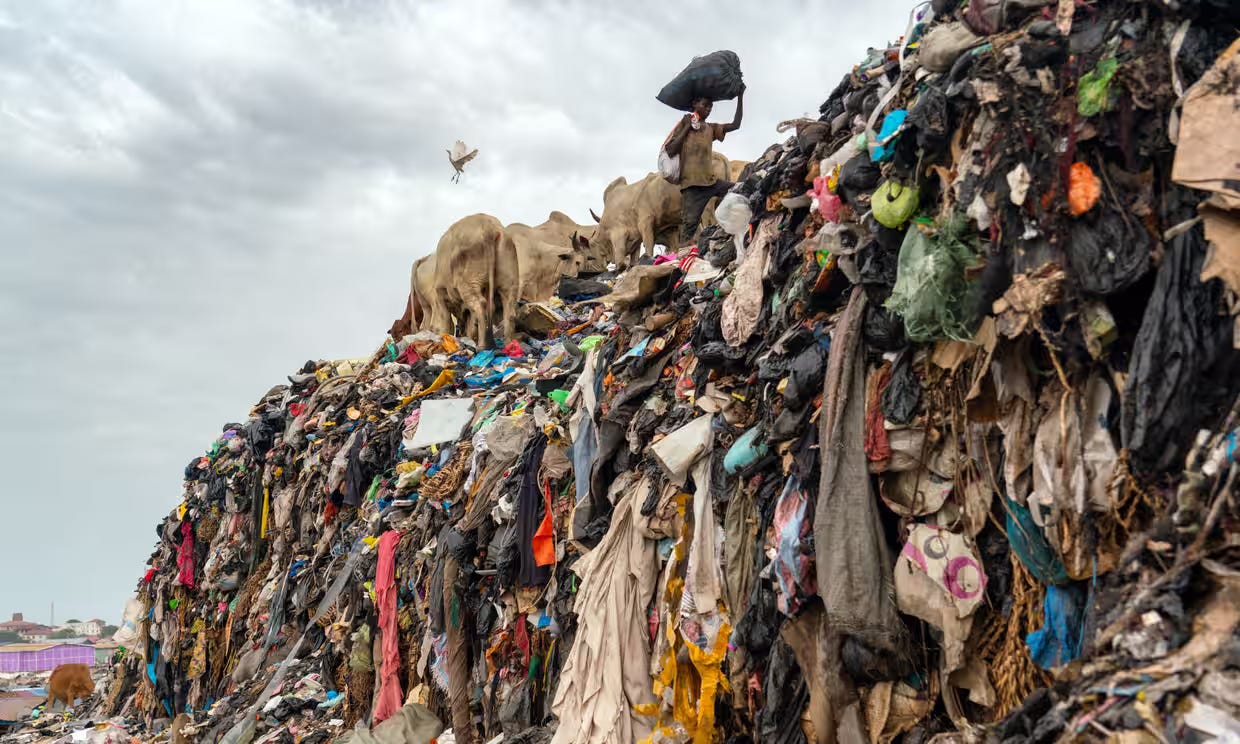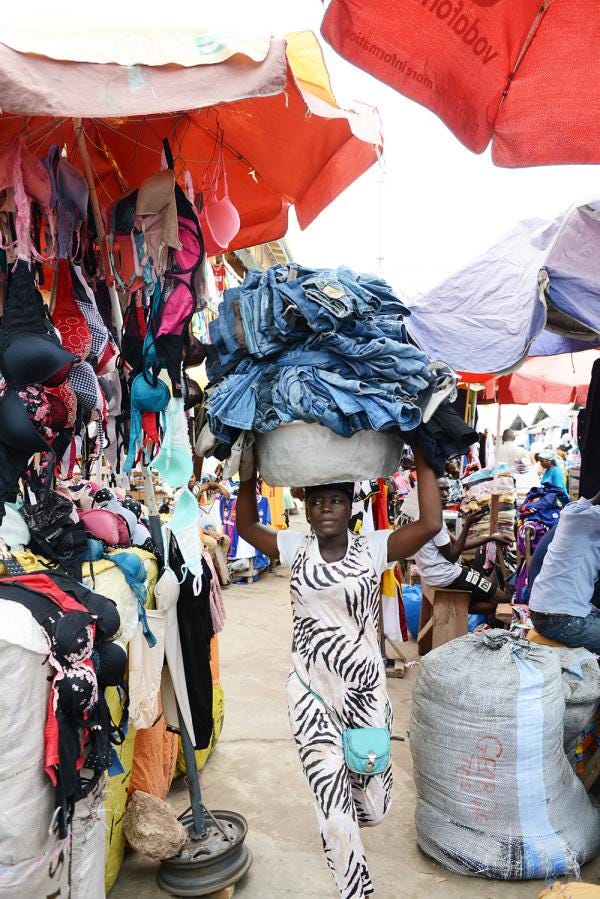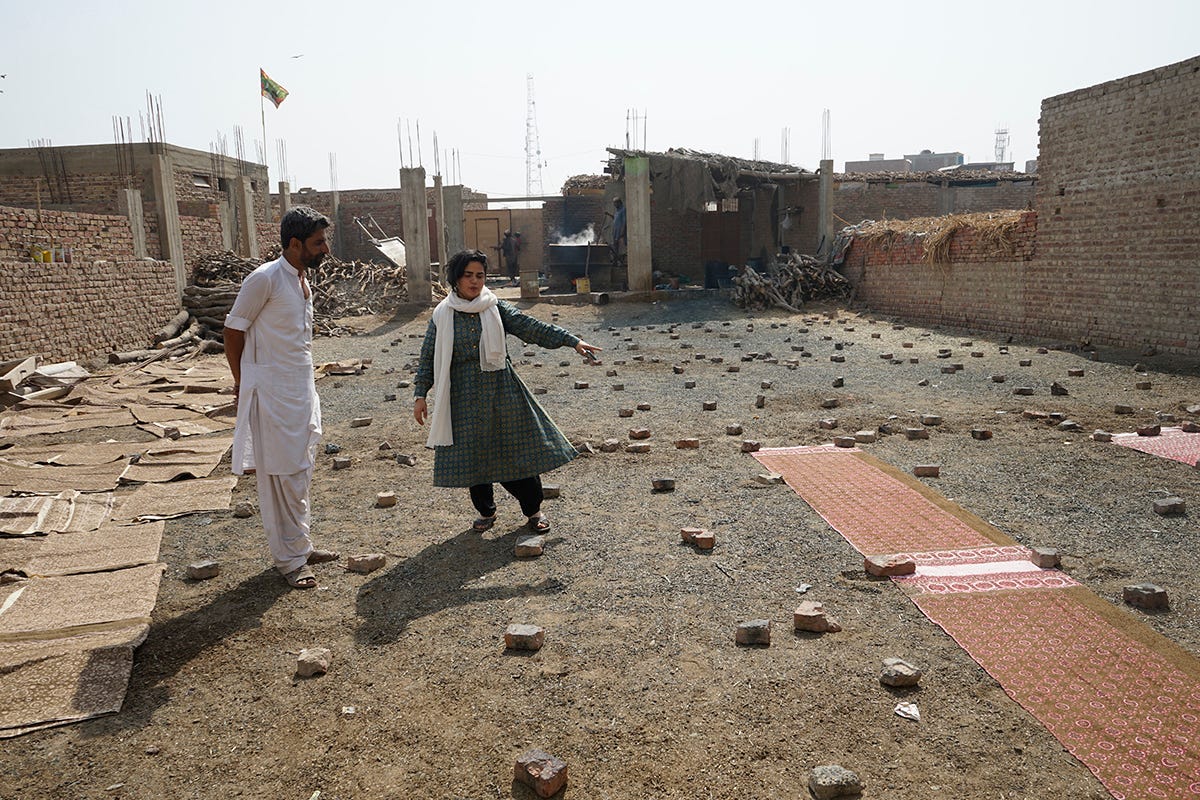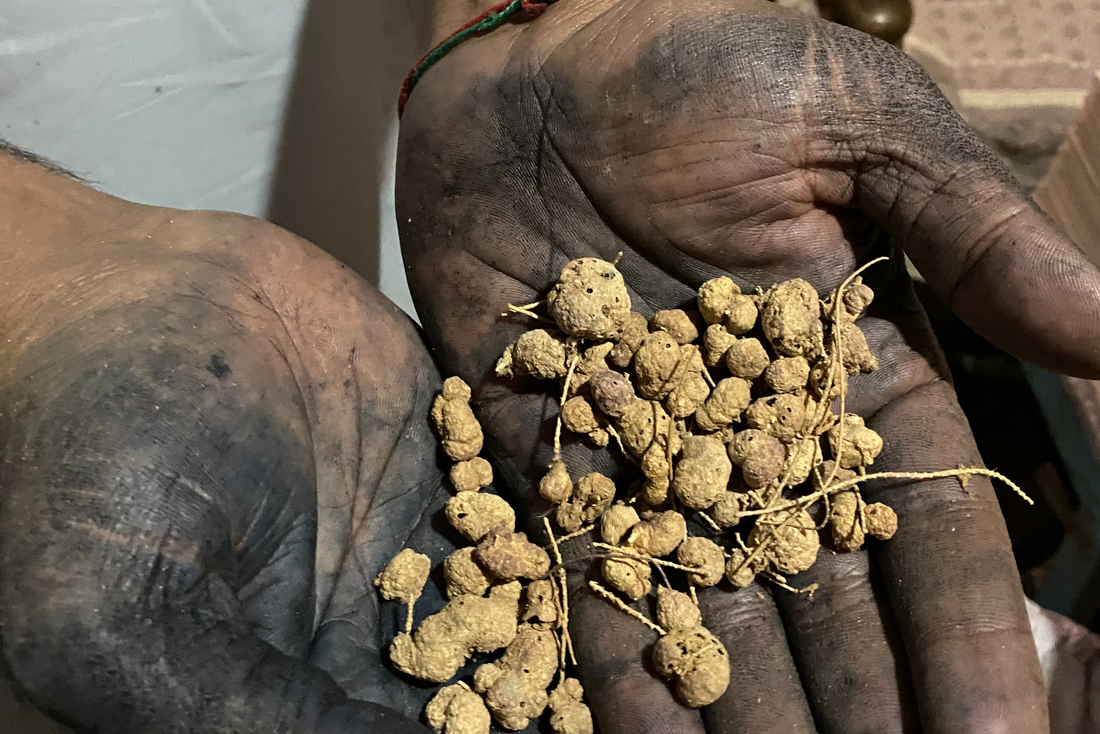The phrase "sustainable fashion" is a well-dressed lie, a contradiction stitched together to keep us from seeing the truth: we are drowning in clothing.
There is no need to produce a single new garment to clothe another human being. And yet, the machines keep humming, the runways keep flashing, and the labels keep lying.

Sustainability, as it stands in fashion, is a balm for our consumer guilt. We are told to shop better, not less. To buy organic cotton and recycled polyester, as if swapping out one fabric for another will save us from the deluge of 100 billion garments produced annually—92 million tonnes of which will be discarded by year’s end. The entire world is a landfill, and we are being sold the fantasy that we can shop our way out of it.
The Deluge and the Dearth
The industry feeds us an endless stream of new materials, each more "sustainable" than the last—pineapple leather, mushroom leather, algae-based textiles. A parade of innovations designed not to slow production but to justify its acceleration. Just because a material is plant-derived does not inherently make it sustainable. Cotton and linen come from plants too, yet the industry continues to exploit land and labor under the guise of innovation.
Some alternative materials do offer lower environmental impact—mycelium leather, for example, uses significantly less water and land than traditional leather. But these materials are often expensive, difficult to scale, or dependent on industrial processes that diminish their ecological benefits. Worse, they do not address the core problem: overproduction. The more "sustainable" options we have, the more we feel justified in consuming, perpetuating the very cycle we claim to resist.
With every new "solution," consumers are left drowning in a flood of contradictory claims and buzzwords. The sheer volume of options, certifications, and vague sustainability pledges makes it nearly impossible to discern what is truly impactful. This confusion is intentional—a fog of information designed to keep us believing in progress while the cycle of overproduction continues unchecked.
The truth is, there is no such thing as sustainable fashion—only sustainable choices. And those choices do not live in the shopping cart; they live in the systems we build, the demands we make, and the power we take back from an industry that survives on our complicity.
A Convenient Distraction
"Sustainable fashion" is a distraction. It keeps the responsibility neatly in our hands—encouraging us to calculate our wardrobe’s carbon footprint, to shop resale, to choose "better brands." This illusion keeps our gaze fixed on our own consumption rather than the industry fueling overproduction.
The entire notion of individual responsibility in climate change was a deliberate marketing strategy, pioneered by BP when they popularized the "carbon footprint"—a term designed to make us believe the crisis was ours to solve alone. Fashion operates in the same way. It wants us to feel responsible for its excess, its pollution, its waste. It wants us to feel guilty for not choosing the "right" fabrics, the "right" brands, the "right" habits. But no amount of ethical shopping will dismantle an industry designed to extract, exploit, and discard.
This does not mean individuals are powerless—but our most effective actions lie beyond consumer choices. Collective action, policy advocacy, and shifts in cultural attitudes toward fashion are far more impactful than meticulously curating an "ethical" wardrobe.
The Invisible Labor Behind the Lie
Even if the industry miraculously found a way to make clothing production carbon-neutral, it would still be unsustainable—because true sustainability is not just about the planet. It is about the people who make these garments, the 300 million workers trapped in an industry that thrives on their exploitation. Fashion has always been built on the backs of the invisible—from the enslaved people who cultivated cotton to the garment workers in factories today.
The industry depends on keeping this labor unseen, allowing consumers to disconnect from the human cost behind their clothing. This invisibilization fuels the culture of disposability, making it easy to treat garments as ephemeral, to be bought and discarded without thought.
"Sustainable fashion" rarely accounts for the hands that sew these garments, for the labor that keeps the industry afloat. There is no sustainability in wages that do not sustain life. There is no sustainability in supply chains built on suffering. Until fashion reckons with its history of exploitation and its present-day abuses, any claim of sustainability is a hollow, self-serving lie.
The consequences of this overproduction are not confined to the Global North. The Global South disproportionately bears the burden of the North's consumption habits. Initiatives like "Dead White Man's Clothes" shed light on how secondhand garments from Western countries flood markets in places like Ghana, overwhelming local economies and ecosystems. In Accra's Kantamanto market, approximately 40% of the 15 million items arriving weekly are deemed worthless and discarded, leading to environmental degradation and public health crises.

This deluge of discarded clothing stifles local textile industries and turns regions in the Global South into dumping grounds for the North's waste. The fashion industry's structure relies on cheap labor in the Global South to meet the insatiable demand of consumers in the Global North. Countries like Kenya import vast quantities of secondhand clothes, with a significant portion ending up as waste due to poor quality, contributing to environmental pollution and undermining local businesses.
The Only Sustainable Fashion is Less Fashion
But it doesn’t have to be this way. There are worlds beyond the churn of fast fashion, worlds where clothing is not disposable, where we mend what we have, where we cherish the hands that made what we wear. Organizations like Fibershed are building regional textile economies that prioritize local fiber, natural dyes, and regenerative farming, creating systems where garments are rooted in place and in community rather than globalized exploitation. Slow Factory is pushing for open education, ensuring that knowledge about regenerative practices and labor rights is accessible rather than hoarded by corporations.
At an individual level, rejecting the fashion churn means embracing practices like clothing swaps, repairs, and community-driven fashion initiatives rather than simply opting for "sustainable" brands. These are not just acts of resistance but acts of reconnection—reconnection to the people behind our clothing, to the resources used to create them, and to traditions of longevity rather than disposability.
Yet even these efforts cannot bear the weight of change alone. Without legislation to hold corporations accountable, we will remain trapped in an illusion of progress while the cycle of extraction continues. Policies like the Fashion Workers Act, which protects garment workers from wage theft and exploitative contracts, are necessary to force accountability into an industry that has thrived on impunity for too long. Extended Producer Responsibility laws, which make brands responsible for the end-of-life of their products, could shift the burden away from consumers and onto the companies that have long profited from disposability.
Real change will not come from consumer choice alone—it will come from collective action, from refusing to accept the industry’s lies, from demanding an end to its unchecked power. Fashion does not have to be built on destruction. It can be built on connection, on longevity, on justice. But only if we are willing to tear down the illusion and build something new in its place.



